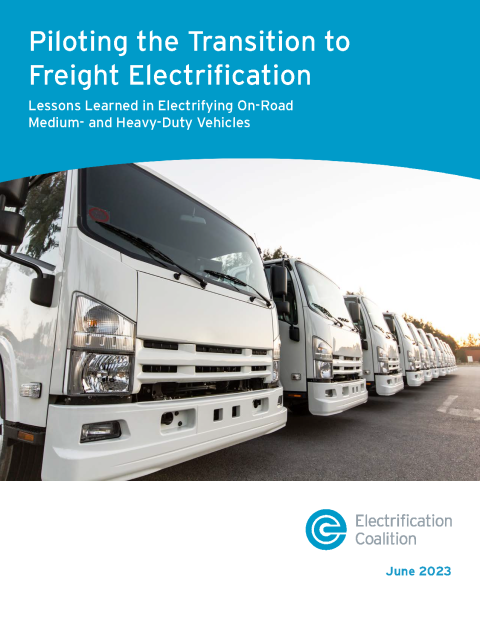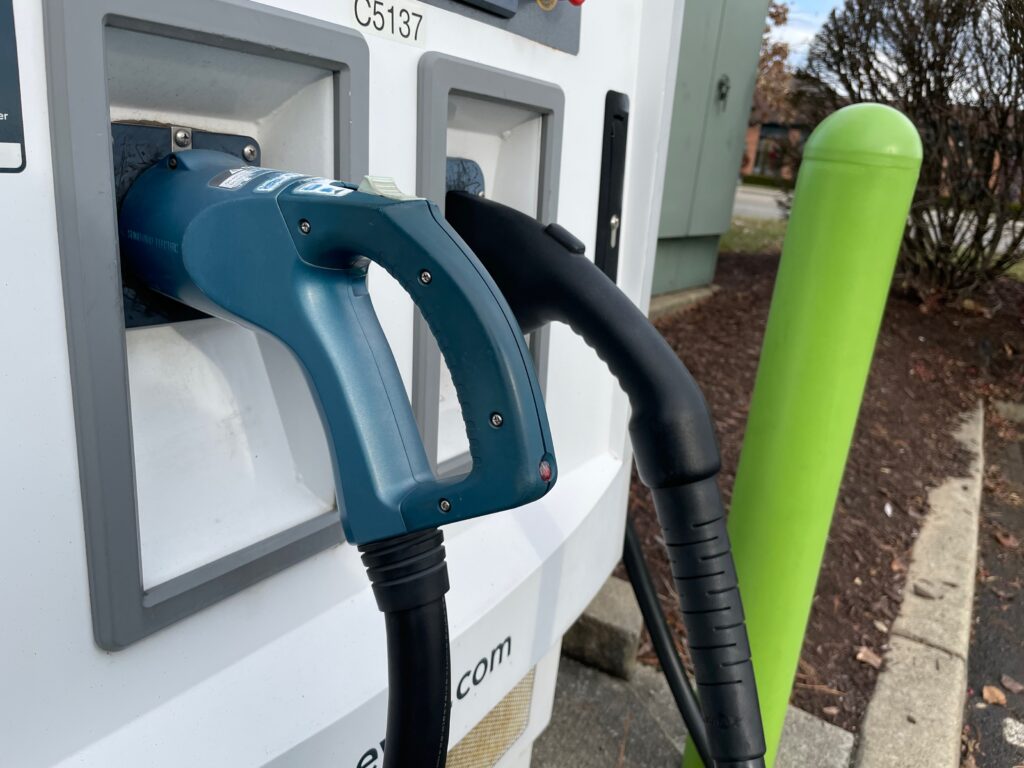Freight Electrification Pilot Project Report
Over the last few years, the Electrification Coalition (EC) supported freight electrification pilot projects of several large national and international companies (‘pilot partners’). We worked with these companies to better understand their challenges in implementing pilot electrification projects and identify best practices. This report contains challenges we identified throughout the process, as well as suggested solutions to overcome said challenges.
V2X Implementation Guide
The SAFE-EC “V2X Implementation Guide and Mutual Aid Agreement Template for Using Vehicle-to-Everything-Enabled Electric School Buses as Mobile Power Units to Enhance Resilience During Emergencies” (guide) describes the potential to use V2X-enabled ESBs as alternative emergency backup power sources during outages. The guide includes detailed steps for emergency managers and responders and other key stakeholders, such as school districts, school facility managers, and electric utilities, to take before, during, and after an emergency to deploy bidirectionally enabled ESBs to provide emergency backup power. The guide recommends that V2X-enabled ESBs become recognized resources within the federal National Incident Management System and integrated into emergency plans in accordance with the Incident Command System. Such actions can expand interest in, and accelerate the deployment of, these technologies.
The guide also identifies potential federal funding opportunities that could facilitate the deployment of V2X–enabled ESBs for resilience purposes. Part II of the guide consists of a Mutual Aid Agreement (MAA) template with specific elements that are necessary to have in place and that merit agreement by relevant parties, so ESBs can be readily deployed during emergencies.
Utilizing ESBs to power critical facilities in emergencies will enhance infrastructure resilience, save lives, and strengthen our energy and national security.
NEVI Principles For Second-Year State Plans
The National EV Infrastructure (NEVI) program is a foundational program that will accelerate EV adoption. The program calls for building a network of EV charging stations along designated alternative-fueled corridors (AFCs), enabling consumers to get from place to place easily and eliminating range anxiety. The Joint Office on Energy and Transportation provides requirements on how the NEVI funding can be spent, and information can be found on their website. The EC has outlined additional principles that states can follow for the submission of their second-year state plans.
Additional Resource Links
Policy Recommendations:
- AchiEVe: Model Policies to Accelerate Electric Vehicle Adoption – Electrification Coalition
- Local Government Playbook – Electrification Coalition
- Giving Fleets the Freedom to Buy – Electrification Coalition
- Global Commercial Drive to Zero Program – Policy and Actions Toolkit – Electrification Coalition
Financing:
- Electrification Coalition – EV Funding Finder
- Key Differences between the 2022 Clean School Bus Rebate Program and the 2023 Clean School Bus Grant Program – Electrification Coalition
- Total Cost of Ownership Calculator – Electrification Coalition & Dana
- Dashboard for Rapid Vehicle Electrification: DRVE Tool – Electrification Coalition
- EV Funding and Finance Guide – Electrification Coalition
- Saving Money with Electric Vehicle Leasing: A Case Study of City Fleets – Electrification Coalition
Fleet Analyses, Case Studies, & Resource Kits:
- Piloting the Transition to Freight Electrification – Electrification Coalition
- Nevada State Fleet Electrification Analysis – Electrification Coalition
- Saving Taxpayer Money on Florida’s Vehicle Fleet: Total Cost of Ownership Survey and Savings – Electrification Coalition
- Municipal Fleet Electrification: A Case Study of Cincinnati, OH – Electrification Coalition
- Municipal Fleet Electrification: A Case Study of Binghamton, NY – Electrification Coalition
- Municipal Fleet Electrification: A Case Study of Charlotte, NC – Electrification Coalition
- Municipal Fleet Electrification: A Case Study of Des Moines, IA – Electrification Coalition
Other Links:
- Addressing the Utility and EV Intersection – Electrification Coalition
- Fleet Advisory Services (FAS) for Fleet Electrification: Meet Customer Needs and Provide Grid Benefit
- Preparing the Workforce for EV Charging: Electric Vehicle Infrastructure Training Program (EVITP) Factsheet – Electrification Coalition



